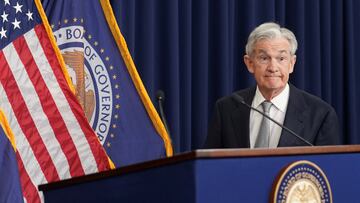How will today’s Fed decision on interest rates affect mortgages?
The Federal Reserve has continued its interest rate pause at its most recent meeting. We take a look at how this could affect consumers.

The Federal Reserve announced it would be keeping the federal funds rate up to 5-5.25 percent as economists had expected. The federal funds rate is set by the Fed and is used as a benchmark with which banks borrow and lend to each other. It is not the exact rate that customers experience, but the two are closely linked.
“Recent indicators suggest that economic activity expanded at a strong pace in the third quarter,” the Fed said. “Job gains have moderated since earlier in the year but remain strong, and the unemployment rate has remained low. Inflation remains elevated.”
Breaking News: The Fed left interest rates unchanged for the second consecutive time, but did not rule out an increase in the coming months. https://t.co/46l2qFQQM2
— The New York Times (@nytimes) November 1, 2023
The Fed is hoping that relatively high rates will cool the economy by discouraging borrowing. However, for those who already have some kind of credit mechanism or loan, this strategy has been costly. We take a look at the consequences for some of the most common types of borrowers.
How interest rates affect mortgages
Typical mortgage rates in the United States are not specifically tied to the federal funds rate, rather they track the yield on 10-year Treasury Bonds. The value of the bonds is related to the Fed’s economic outlook, and further interest rate hikes do not convey confidence from the central bank.
Related stories
Current figures for 15-year and 30-year fixed-rate mortgages are 6.78 % and 7.65 %, respectively. When compared to the rates from this time last year, both have risen by a large margin, mainly from increasing interest rates by the Federal Reserve.
While those with fixed-rate mortgages will not see any change to the rate applied to their principal balance, those looking to purchase a home will end up paying a higher price than they would have last year. The benefit for current buyers is that as rates increase and the cost of a mortgage goes up, some buyers will leave the market, which should bring down home prices. However, the Bureau of Labor Statistics reported that increases in housing costs drove around seventy percent of the 0.4 percent increase in consumer prices seen in February. In March, housing costs continued to drive up prices.
